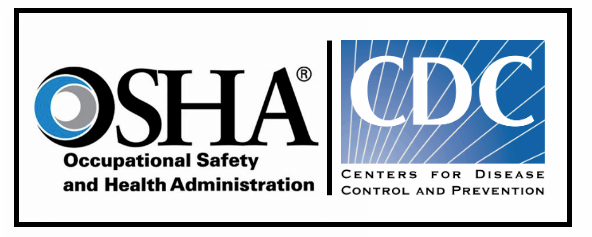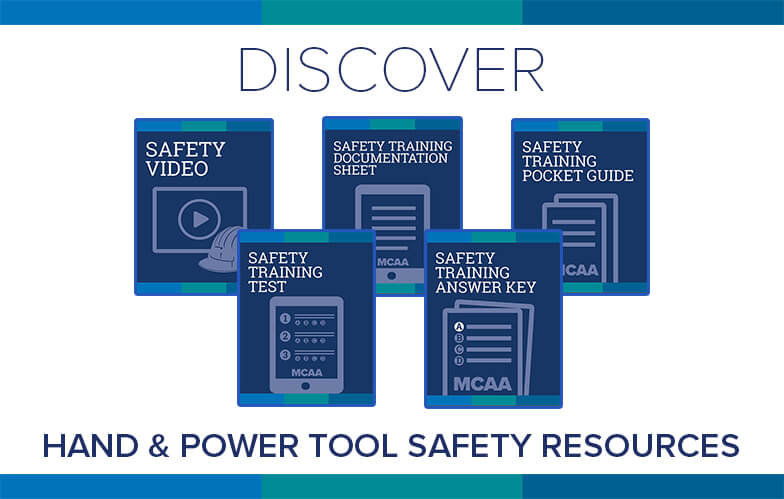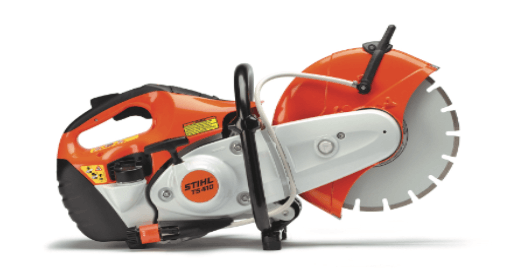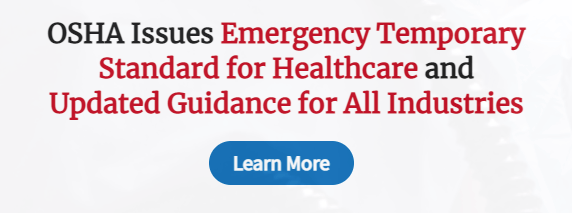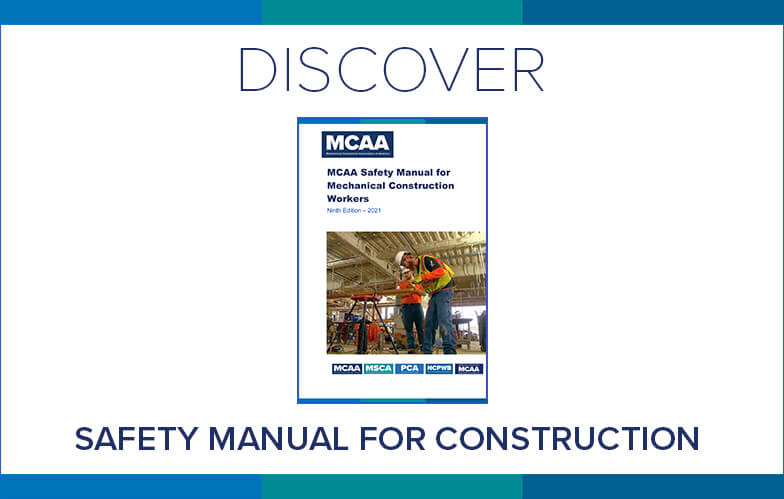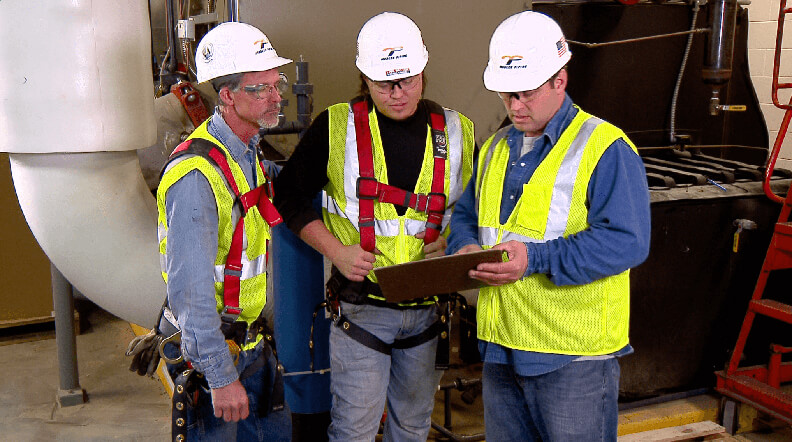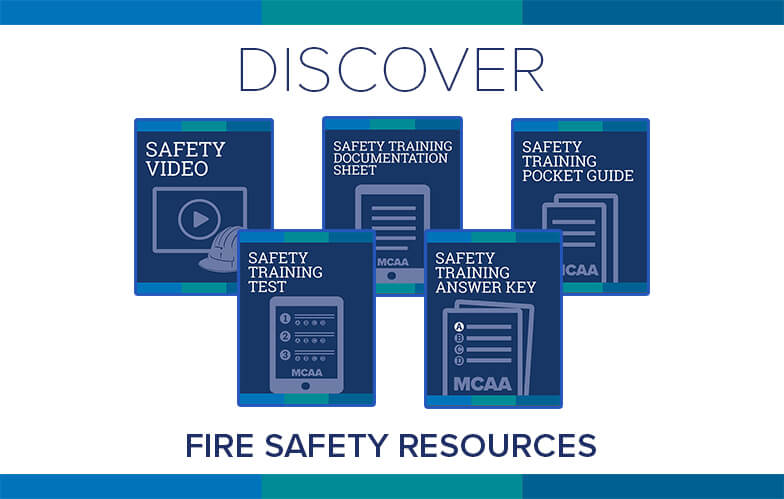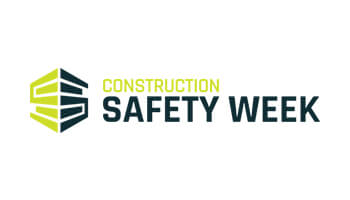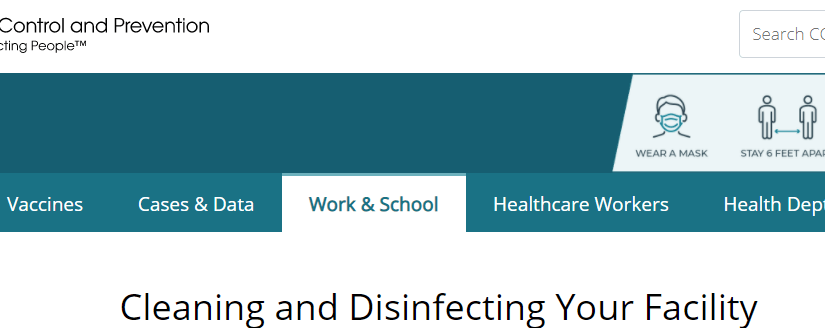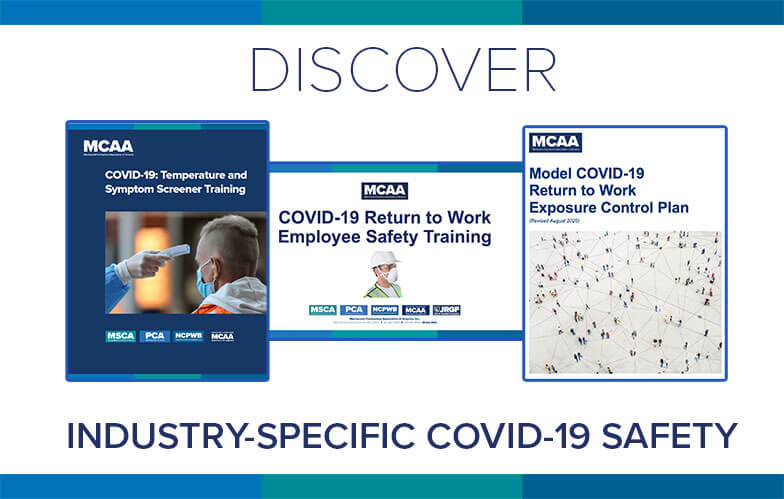MCAA’s Construction Safety Week celebration concludes with a look back at the fall prevention and protection resources we have been highlighting during the week.
MCAA’s Ladder Safety Training Video
This video will show your fitters, plumbers, and service technicians how to properly inspect, transport, set up and use ladders safely.
The video emphasizes:
- Common reasons for falls
- The safe use of ladders, including stepladders and portable straight ladders
- How new ladder technology has substantially improved ladder safety
Accompanying materials assist you in highlighting key training points, documenting worker training and confirming that workers understand the training concepts.
Download MCAA’s Ladder Safety Training Video & Materials
Video | Pocket Guide | Documentation Sheet | Test | Answer Key
MCAA’s Fall Prevention and Protection Safety Training Video
This video helps the viewer understand the differences between fall prevention and fall protection with emphasis on the components of fall restraint and fall arrest systems and how to use them properly and safely.
The video also guides the viewer through the fall rescue planning process, including how to survive while suspended in a fall arrest harness after falling and until help arrives.
Accompanying materials assist you in highlighting key training points, documenting worker training and confirming that workers understand the training concepts.
Download MCAA’s Fall Prevention and Protection Safety Training Video & Materials
Video | Pocket Guide | Documentation Sheet | Test | Answer Key
MCAA’s Model Fall Protection Program
This model program describes the fall hazards that are anticipated in the mechanical construction and service industry and addresses safe fall prevention and protection measures involving mobile and fixes scaffolds, aerial lifts, floor holes, wall openings, and ladders. These safety measures, which are covered in detail, include guardrail systems, personal fall arrest systems, fall restraint systems, and floor hole covers.
DOWNLOAD
MCAA’s Model Fall Rescue Safety Program and Plan
It becomes extremely dangerous for a worker to hang in a fall arrest harness for more than a couple of minutes, so companies are required to have an action plan in place to rescue workers immediately in the event of a fall and subsequent suspension from a fall arrest harness.
MCAA’s Model Fall Rescue Safety Program and Plan helps the user develop a fall rescue plan addressing management responsibility, methods of fall rescue, information on “Qualified Fall Rescuers,” and training requirements.
DOWNLOAD
Check Out All of MCAA’s Safety Resources
Learn more about safety and health in our industry and access safety-related resources in these locations:
If you have questions about any of these resources or MCAA’s Safety Excellence Initiative, contact Pete Chaney.
About Construction Safety Week
Construction Safety Week was started in 2014, when more than 40 national and global construction firms comprising the Construction Industry Safety Initiative (CISI) group and the Incident and Injury Free (IIF) CEO Forum joined forces with a single aim: to inspire everyone in the industry to be leaders in safety.
